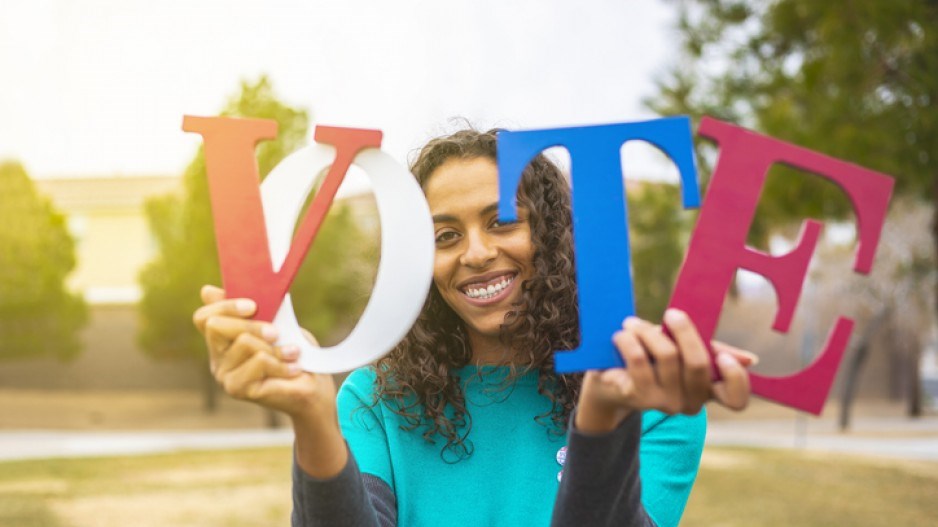As the United States awaits the final certification of the results of the latest federal election, a few things are patently clear.
Democratic Party nominee Joe Biden has secured a majority of all votes cast and will have an advantage in the Electoral College, recapturing the states of Michigan, Pennsylvania and Wisconsin for his party.
While votes are still being counted, the most conservative estimates suggest that voter turnout increased in the United States by seven percentage points from 2016. More than two-thirds of the country’s 239 million registered voters exercised their franchise, by mail or in person.
In October, as Americans were pondering their options, Canada saw two provincial elections during the COVID-19 pandemic where voter turnout was less than stellar: 53% in Saskatchewan (down from 58% in 2016) and 55% in British Columbia (down from 61% in 2017).
There are different ways to analyze these numbers. Voters may have been concerned about heading out to a polling station in the middle of a pandemic, even if they had many opportunities to request a mail-in ballot. It must also be noted that these provincial elections returned two incumbents perceived as being superior to their key rivals.
In our surveys, British Columba Premier John Horgan held a 36-point lead over opposition leader Andrew Wilkinson (53% to 17%) on being best suited to handle the pandemic. In Saskatchewan, Scott Moe had a 22-point advantage over challenger Ryan Meili (51% to 29%) as the “preferred premier.”
Things were different in the United States, where Biden was ahead of Donald Trump on pandemic management by a large margin (51% to 19%). The outcome may be dissimilar to what some narratives pushed – especially for those who daydreamed about Democratic triumphs in Florida and Texas – but is, as is always the case with one-term presidents, a rejection of the incumbent’s performance.
For the past few years, there have been discussions about expanding the pool of voters in North America by allowing immigrants and older teenagers to cast ballots. Research Co. recently asked Canadians and Americans if they believe this modification would be warranted at the federal level at this time.
In Canada, only 29% of respondents are in favour of extending federal voting rights to people aged 16 and 17, while a sizable majority (62%) opposes this idea. The level of rejection for “older teen voting” is highest among Canadians aged 55 and over (72%), Albertans (78%) and Conservative Party voters in the 2019 election (also 78%).
When Canadians are asked if adult permanent residents of Canada should be allowed to cast ballots in federal elections, the result is very different. More than seven in 10 respondents (72%) are in favour of this change, and only 20% are opposed to it. Canadians of South Asian descent are more likely to support this extension (80%) than those of European (69%) and East Asian (61%) ancestry.
When we asked the same two questions in the United States, the outcome was analogous. Only a third of Americans (33%) are willing to allow people aged 16 and 17 to cast ballots in federal elections, while almost three in five (58%) disagree. Women (62%) and Americans aged 55 and over (77%) are more likely to resist this modification. Animosity is higher from independent voters (74%) than among those who identify with the Republicans (62%) or the Democrats (49%).
Many Americans are willing to grant voting rights to legal permanent residents (sometimes referred to as Green Card holders). Almost two-thirds of respondents (64%) are in favour of this notion, while 27% disagree. Support is highest in the Northeast (70%), followed by the South (66%), the West (63%) and the Midwest (57%). Majorities of White Americans (61%), Hispanic and Latino Americans (67%) and African Americans (72%) concur.
The road towards some type of reform of federal voting rights in the two North American countries is especially convoluted. The two groups that currently lack an opportunity to take part in the democratic process will eventually be able to do so: by turning 18 in the case of teenagers and after following through on a process that would make them citizens, in the case of legal permanent residents.
With democracy, eligible voters in North America are trusting of adults who have legally settled in their countries and skeptical of natural-born residents who are on the verge of adulthood. In any case, those who would like to see larger voter turnouts in elections will have to focus on finding out new ways to connect with the existing electorate. Adding new names to the registries will never be a substitute for clear ideas that motivate voters to care and to act.
Mario Canseco is president of Research Co.
Results are based on online studies conducted from November 14 to November 16, 2020, among representative samples of 1,000 adults in Canada and 1,200 adults in the United States. The data has been statistically weighted according to Canadian and U.S. census figures for age, gender and region in each country. The margin of error, which measures sample variability, is plus or minus 3.1 percentage points for Canada and plus or minus 2.8 percentage points for the United States.




